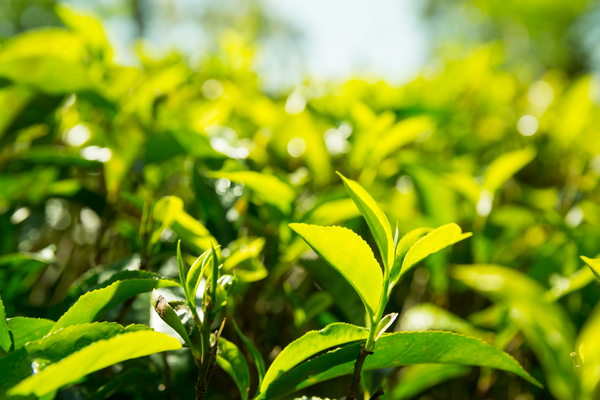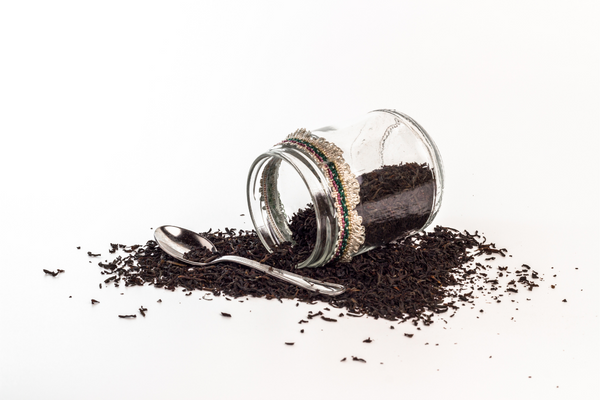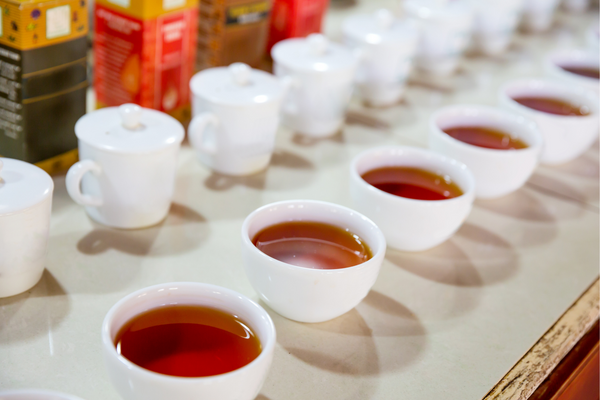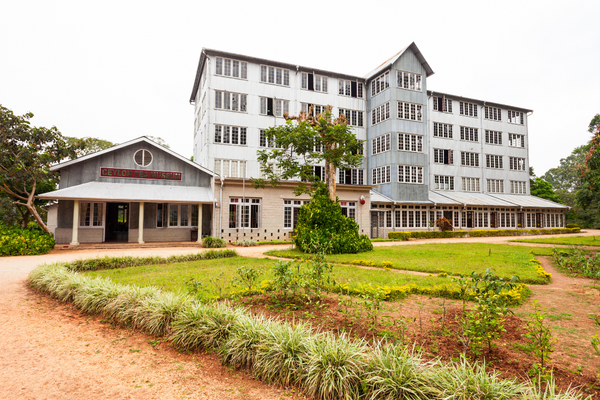Ceylon tea – By Malsha – eLanka

Ceylon tea, also known as Sri Lankan tea, is a type of black tea that is grown and produced in Sri Lanka. Sri Lanka is one of the largest tea-producing countries in the world, and the tea industry is a significant part of the country’s economy.
Ceylon tea has a bold, full-bodied flavor with a rich aroma and a bright, coppery color. The tea is known for its brisk and lively taste and is often described as having a citrusy quality. Ceylon tea can be enjoyed on its own or with a dash of milk and sugar.
The tea is produced from the Camellia sinensis plant, which is grown in the high-altitude tea estates of Sri Lanka. The country’s unique climate and soil conditions are said to give Ceylon tea its distinctive flavor and aroma. The tea is produced using traditional methods, including withering, rolling, oxidation, and firing.
Ceylon tea is available in several grades, which are based on the size and quality of the tea leaves. The highest grade of Ceylon tea is known as “orange pekoe,” which consists of large, whole tea leaves that are picked by hand. Other grades include broken orange pekoe (BOP), flowery broken orange pekoe (FBOP), and dust grades.
Ceylon tea is enjoyed by tea lovers all over the world and is a popular choice for blending with other teas, such as Assam and Darjeeling, to create unique flavor profiles.
Sri Lanka, formerly known as Ceylon, has several tea-growing regions that are located in the central and southern parts of the island. These areas are known for their high-altitude tea estates, which provide the ideal climate and soil conditions for growing high-quality tea. Some of the key tea-growing areas in Sri Lanka include:
- Nuwara Eliya: This region is located in the central highlands of Sri Lanka and is known for producing some of the finest and most expensive teas in the world. The tea from this region has a delicate flavor and a light, floral aroma.
- Kandy: Located in the central part of the island, Kandy is another major tea-growing region in Sri Lanka. The tea from this region has a medium body and a strong, bold flavor.
- Uva: This region is located in the southeastern part of Sri Lanka and is known for its strong, full-bodied teas with a rich, malty flavor.
- Dimbula: This region is located in the central highlands and is known for producing teas with a medium body and a slightly fruity flavor.
- Ratnapura: This region is located in the southern part of Sri Lanka and is known for producing teas with a unique, spicy flavor and aroma.

These tea-growing regions in Sri Lanka produce a variety of black, green, and white teas, with each region contributing to the unique flavor profile of Sri Lankan tea.
Ceylon tea, also known as Sri Lankan tea, is known for its distinctive flavor and aroma, which is a result of the unique climate and soil conditions in the tea-growing regions of Sri Lanka. Some of the specialties of Ceylon tea include:
- Brisk and lively taste: Ceylon tea has a bold, full-bodied flavor with a brisk and lively taste. This is due to the high altitude of the tea estates, which slows the growth of the tea leaves and intensifies the flavor.
- Rich aroma: Ceylon tea has a rich, fragrant aroma that is often described as citrusy or floral. This aroma is a result of the tea leaves being withered, rolled, and oxidized to release their natural oils.
- Versatility: Ceylon tea is a versatile tea that can be enjoyed on its own or blended with other teas to create unique flavor profiles. It can also be enjoyed with milk and sugar or as a refreshing iced tea.
- High-quality grades: Ceylon tea is available in several grades, including the highly prized orange pekoe grade, which consists of large, whole tea leaves that are hand-picked. These high-quality grades make Ceylon tea a favorite among tea connoisseurs.
Overall, Ceylon tea is a high-quality tea that is prized for its flavor, aroma, and versatility. Whether enjoyed on its own or blended with other teas, Ceylon tea is a favorite among tea lovers around the world.
Sri Lanka, also known as Ceylon, is one of the largest tea-producing countries in the world, and it has a large number of tea factories that produce different types of tea. Here are some of the prominent tea factories in Sri Lanka:

- Mackwoods: Mackwoods is one of the oldest tea companies in Sri Lanka and has been producing high-quality teas for over 170 years. Their tea factory is located in the Nuwara Eliya region, and they produce a range of black, green, and herbal teas.
- Dilmah: Dilmah is a well-known tea brand that produces high-quality Ceylon tea. Their tea factory is located in the Ratnapura region, and they produce a range of black, green, and white teas.
- Halpe Tea: Halpe Tea is a family-owned tea company that produces organic Ceylon tea. Their tea factory is located in the Haputale region, and they produce a range of black and green teas.
- Mlesna Tea: Mlesna Tea is a well-known tea brand that produces a range of flavored teas. Their tea factory is located in the Ratnapura region, and they produce a range of black, green, and herbal teas.
- Uva Halpewatte Tea Factory: The Uva Halpewatte Tea Factory is located in the Uva region and is known for producing high-quality, organic Ceylon tea. They produce a range of black, green, and white teas.
These are just a few of the many tea factories in Sri Lanka. Each factory produces unique types of tea, and they all contribute to Sri Lanka’s reputation as a top-quality tea-producing country.

Ceylon tea Museum in Kandy







